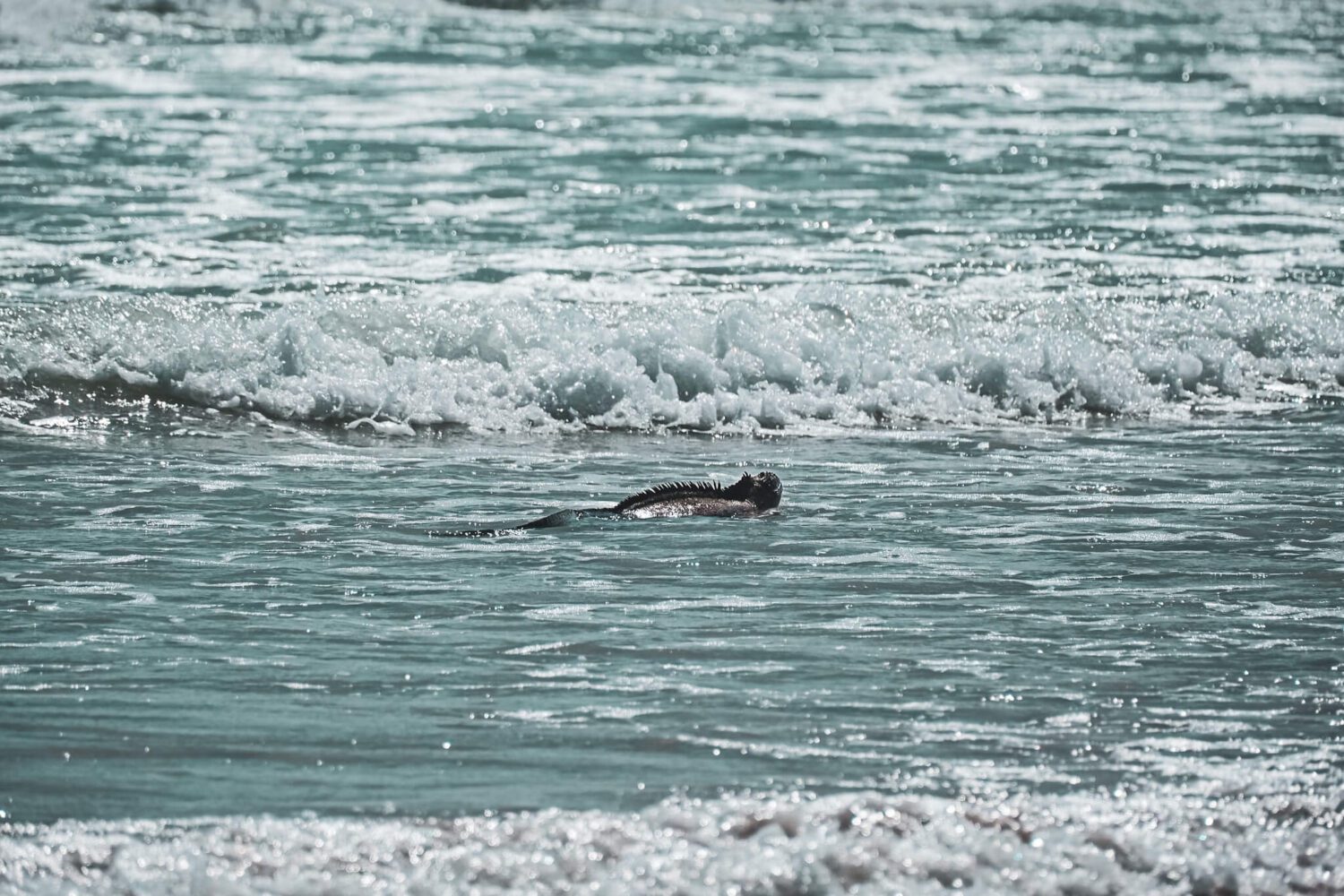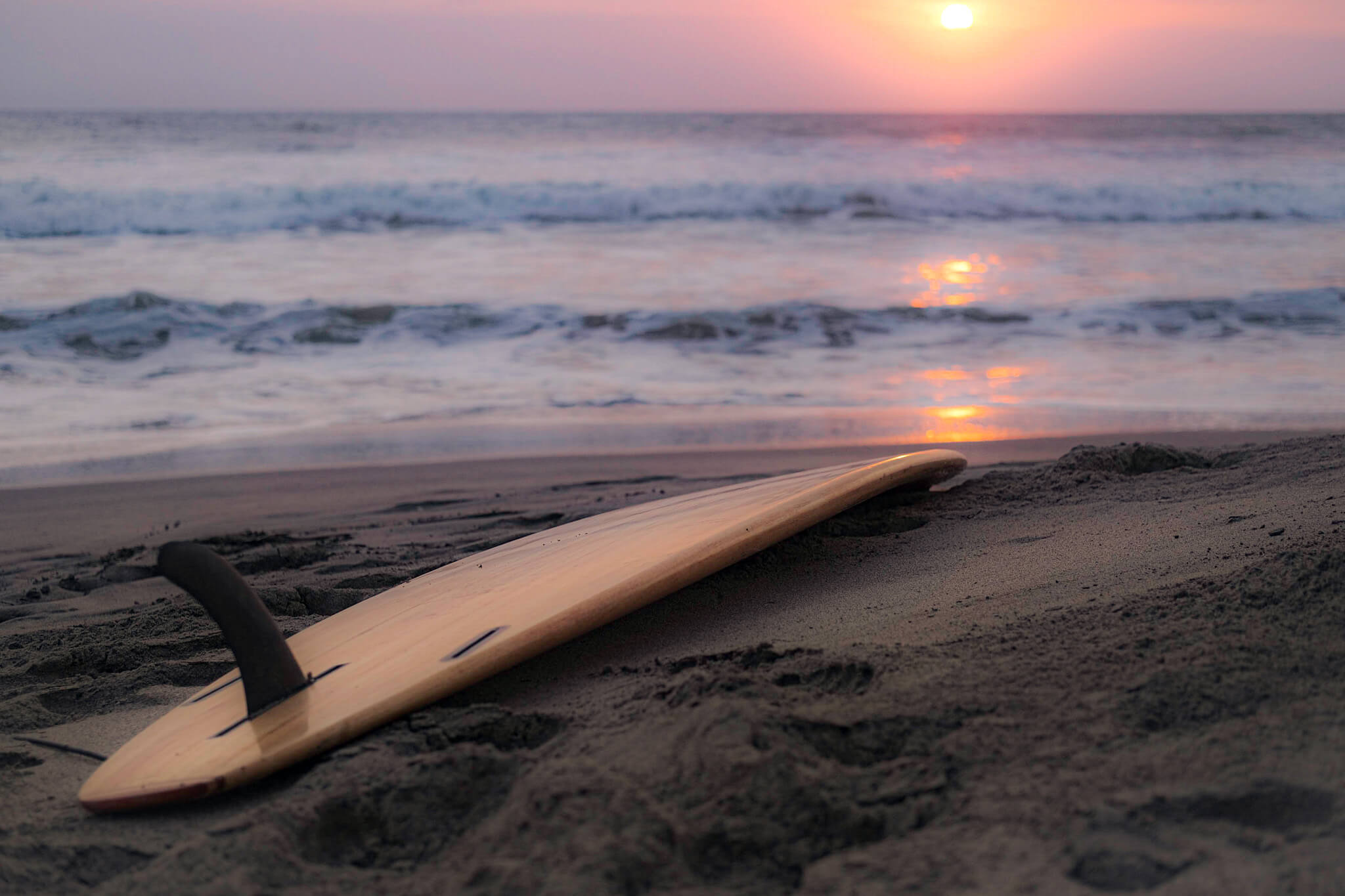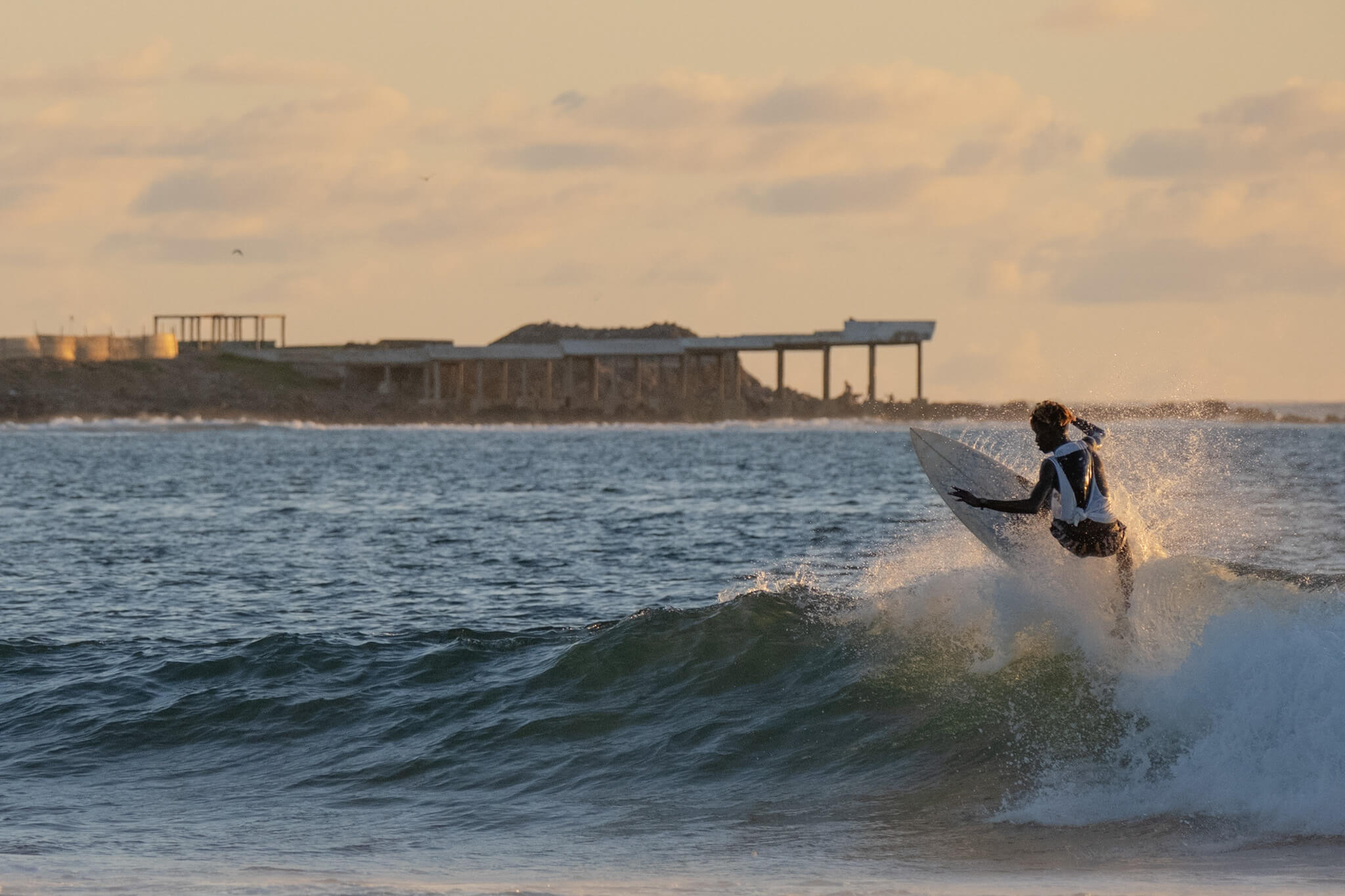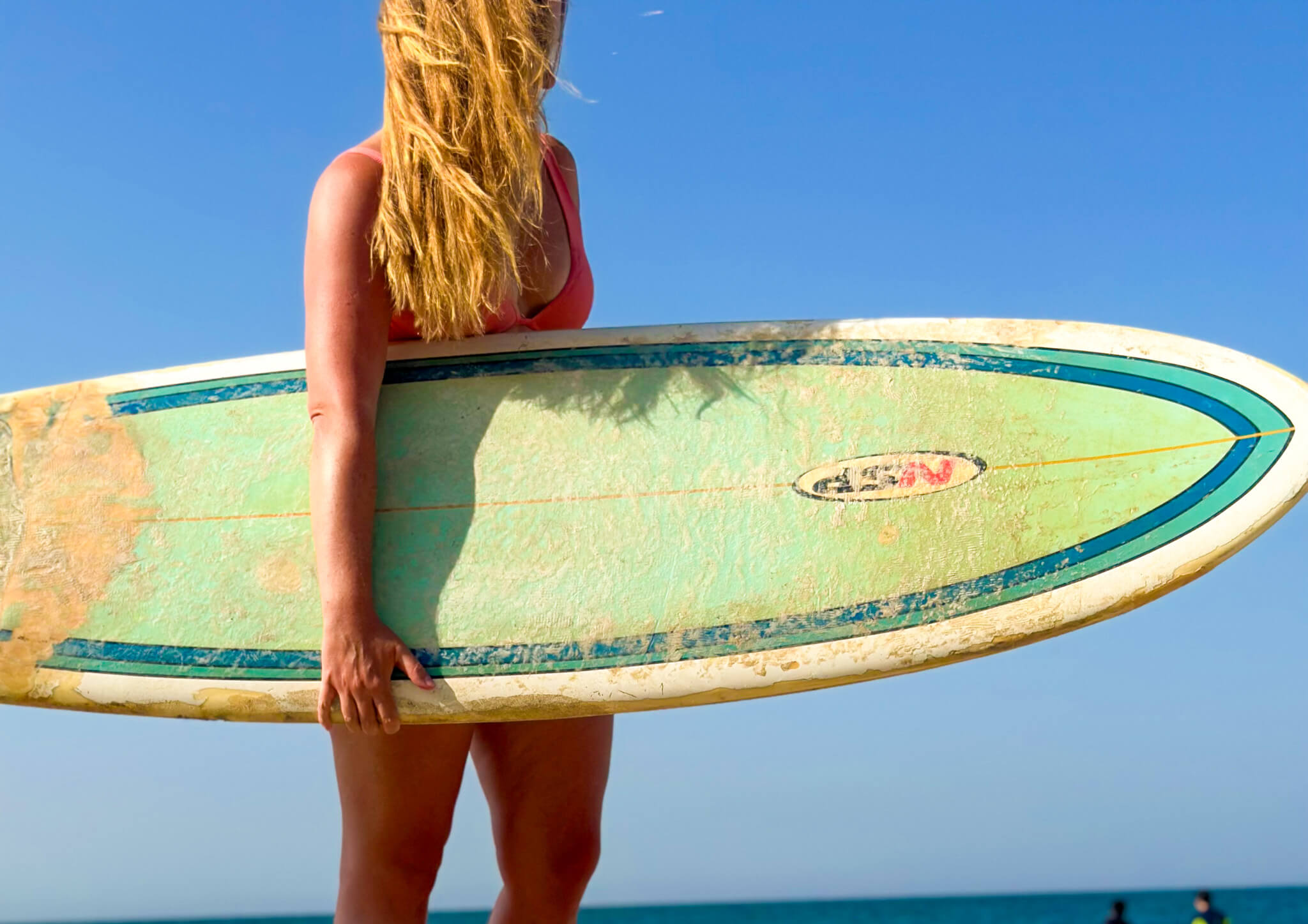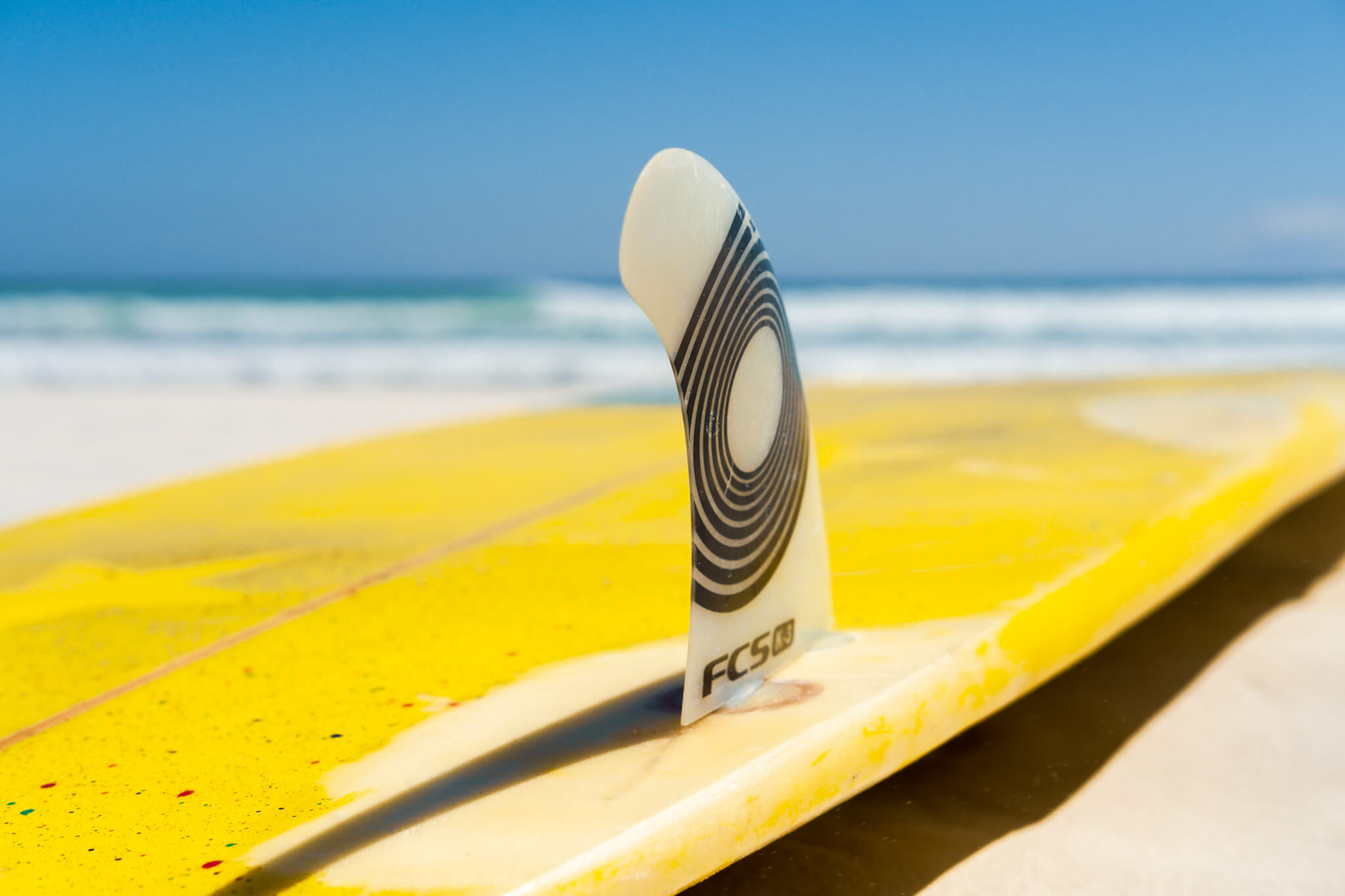Have you ever wanted to chase the endless summer? I know I have!
Growing up I was obsessed with the beach bum surfer life, Kelly Slater posters pulled from Surfer Magazine adorned my walls and although raised in sunny Southern California I didn’t begin my surfing adventure until my 30s. Perhaps making up for lost time, I now find myself planning trips around surf locations and exciting breaks I want to explore.
Here you won’t find advice on beaches in Malibu or the Algarve, this is for the person who wants to surf a break that breaks away from the traditional surf spots everyone knows.
However, if you’re familiar with The Endless Summer you might recognize a few spots.
A world away from the traditional red letter surf spots, these locations are not to be slouched on. Offering more than just a good wave, they’re picturesque locations a world away from what you know and a way to make local friends while ensuring an unexpected trip you won’t soon forget!
Galápagos Islands, Ecuador
My time surfing at Tortuga Bay on Santa Cruz Island remains some of the best surf I have ever hand, both due to the breathtaking beauty of the location and wildlife but also the long, slow waves that complimented my skills perfectly. While a location like no other, the trek there is not for the faint of heart – especially as a longboarder because the beach is a 2.5 kilometer walk from the closest drop off point. And that’s carrying your board of course.
There are actually quite a lot of places to surf in the Galápagos, depending on your skill level. San Cristobal offers professional grade barrels off of a reef break that even watching from a healthy kilometer distance still terrified the sh*t out of me. Isabela has what I was told was a friendly beach break easily walkable from the main street, however I didn’t have time to test it myself.
How to get there
Tortuga Bay is the most ideal spot in my opinion; frankly I can’t imagine another location beating it.
To get to the beach you can either walk with your board from the main strip in Puerta Ayora, about 5 km to the beach (or 2.5 km from the entrance to the reserve) or throw your board into the bed of a pick-up truck taxi to shorten your trip a bit and have them drop you at the entrance to the nature reserve. Once at the drop off point there is no way to hitch a ride and there are no vehicles of any kind allowed past the gate. Not even good old fashioned bikes. What makes the beach so special is how isolated and preserved it is, but this also means there is not even a single vendor with a personal cooler selling drinks or snacks along the shore. So if you’re going to spend a few hours in the waves, plus at least a 5km walk to and from, make sure you bring plenty of water and sustenance as you won’t be able to find anything once you get there.
Walking up a few hills, some stairs, and along an uneven brick path in the unforgiving Ecuadorian sun all the while carrying your board is not for the weak. I only met one other surfer on my journey, a much more experienced local on a short board. The whole walk I was met with horrified looks and whispers from passing tourists as they discussed how to carry my massive longboard the distance they struggled to walk even unencumbered.
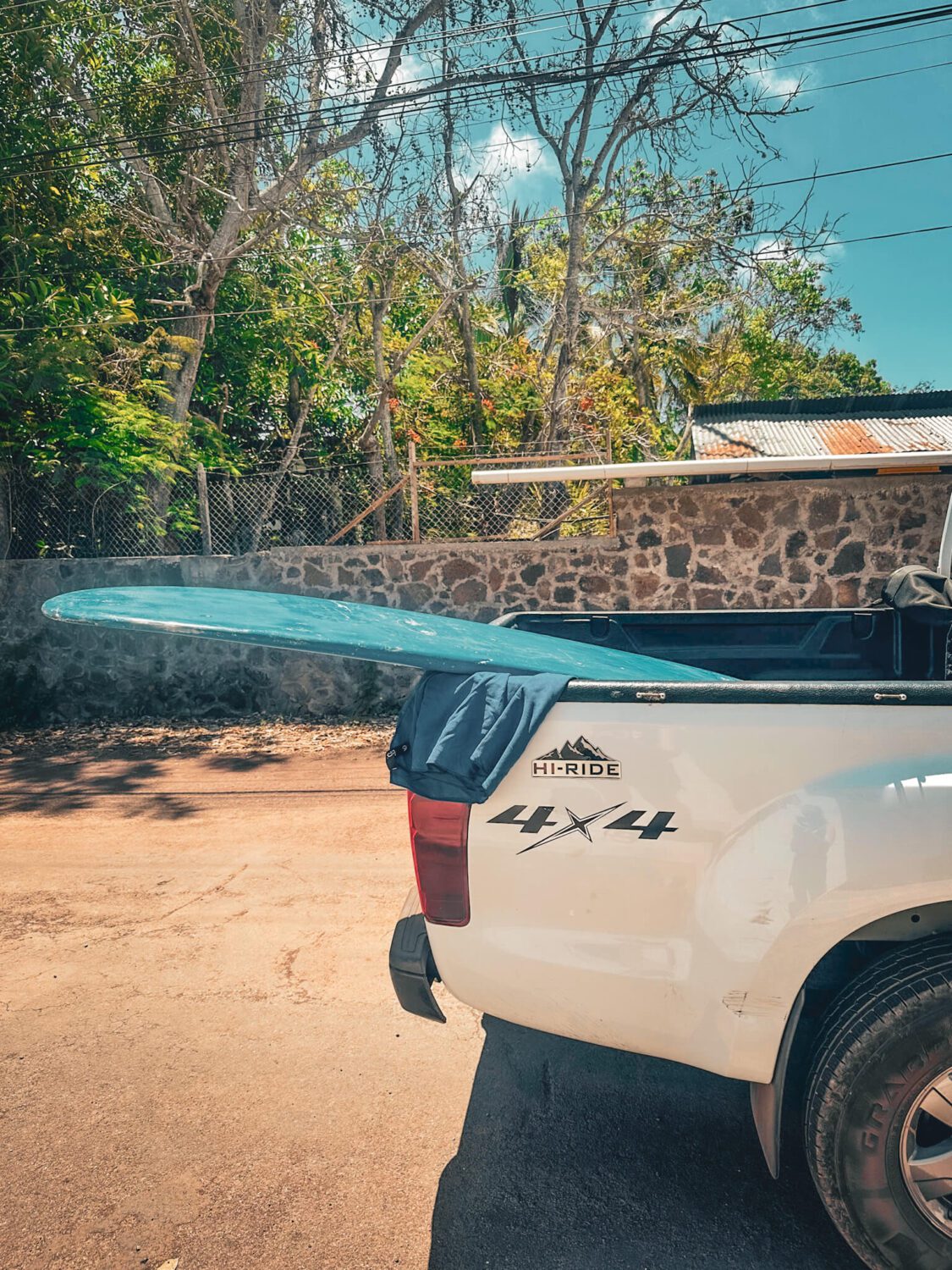
I did the trip on two consecutive days, testing a different board each time. The first day I had a heavy, almost wood-like, longboard that I struggled to carry the distance to and from and which required frequent breaks in what little shade I could find along the way. Although it resulted in one of my best surf days ever, it was a painful return trip. The next day I opted for a fiberglass 9” board that I did not inspect carefully enough before leaving the shop as its weathered surface resulted in an uneven spine across the top, making it impossible for me to stay on for long as my feet couldn’t rest evenly across the top. But as it was my final day on the islands I was determined to make the most of it, poor performance or not.
Where to stay
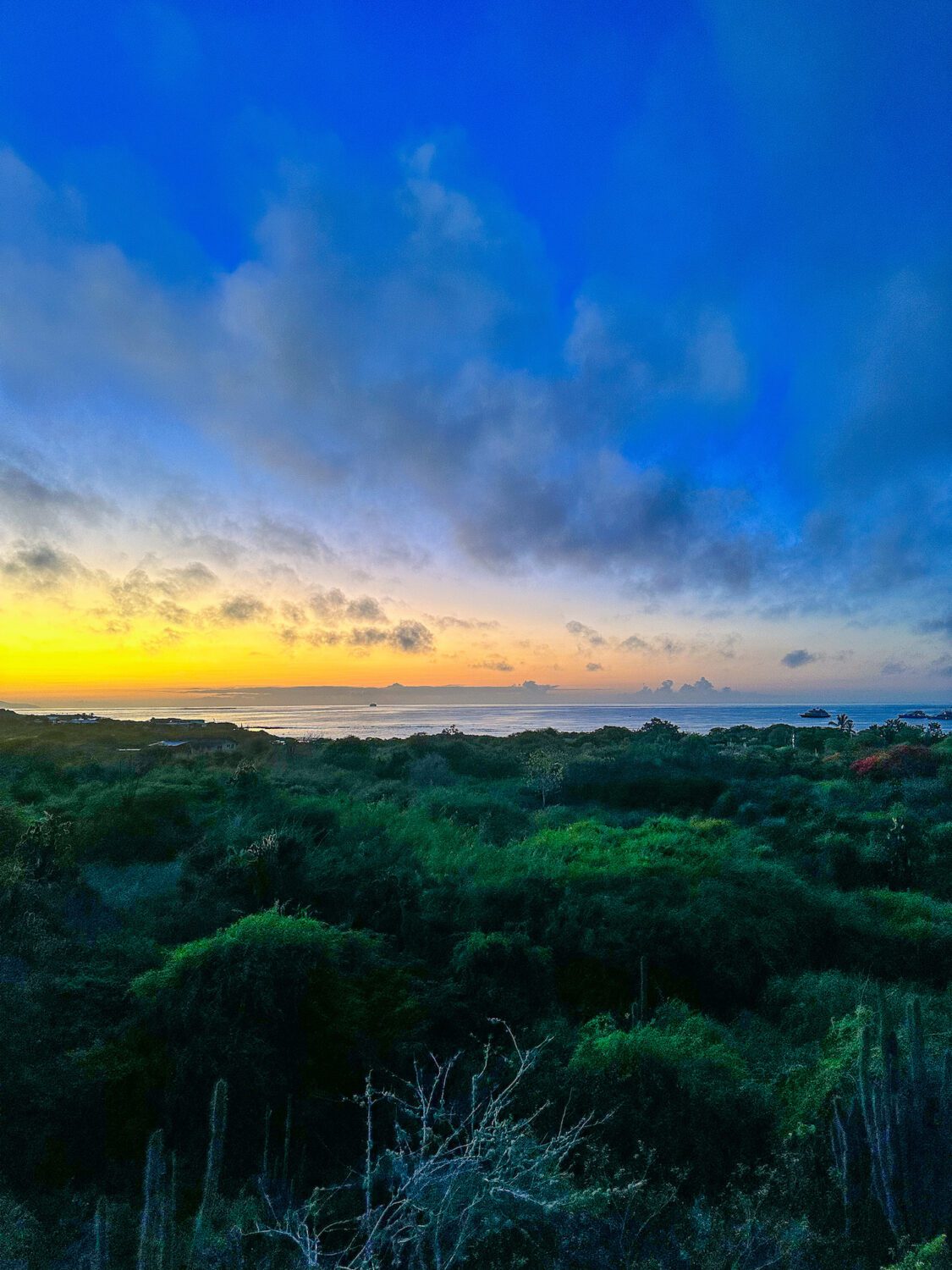
For surfing purposes it doesn’t much matter where you stay. The islands are small and most of the inhabited areas are clustered together. There isn’t any public transportation, but taxis are fairly easily to get and almost all are SUVs or trucks so plenty of space for boards and bags. Several of the hotels I stayed in across the islands also offered a pick-up service from the airport or ferry, for a small fee.
Santa Cruz was my last stop before heading back to mainland Ecuador, and back to Denmark in a few days, so I decided to treat myself to a more expensive accommodation than usual. For the three nights I was on the island I stayed at La Casa de Judy, a top spot known for beautiful rooms with private balconies facing the sea, a delicious breakfast, and a roof terrace to take in as much of the view as possible. I can say firsthand, the cold beers I had on my balcony after back-to-back surf days were some of the best beers of my life.
However, if this is out of your budget there are lots of great alternatives! In general the Galápagos is very expensive, but it’s not impossible to find a good deal. And since the island is small you’re never too far away from the main snorkel areas, restaurants, or the up-and-coming microbrewery scene in Santa Cruz.
Know before you go
The day before my first trip to the bay I asked around among the waiters where I was having dinner that night about the best locations. As any experienced surfer knows, checking with locals about wave size and beach conditions is the best way to ensure you’re not getting yourself into a dangerous spot. My waiter wasn’t a surfer himself, but knew another guy working that night was and brought him over to help me plan my trip the next day.
What makes the Galapagos so amazing and special is how abundant the wildlife is everywhere. And I mean everywhere. Traffic regularly has to stop in town as sea lions lazily cross the road or tired tourists unable to stop for a brief break on a bench as it has been hijacked by a snoring seal. Even the iguanas confidently walk about the main roads, unbothered by passersby. But with this free roaming animal kingdom came my irrational fears of something attacking me in the water. As I chatted with the waiter about conditions and logistics, I jokingly asked about the possibility of sharks along the shore. He laughed and told me not to worry, they’re often there but there had only been one attack in the last ten years. Before I could breathe a sigh of relief, he turned his leg to me, his black shorts clearly showcasing a large scar along his right leg and a fairly sizeable chunk taken out of his calf. He had been the only shark attack in the last decade. Undeterred, he assured me still goes out regularly and it hasn’t happened again.
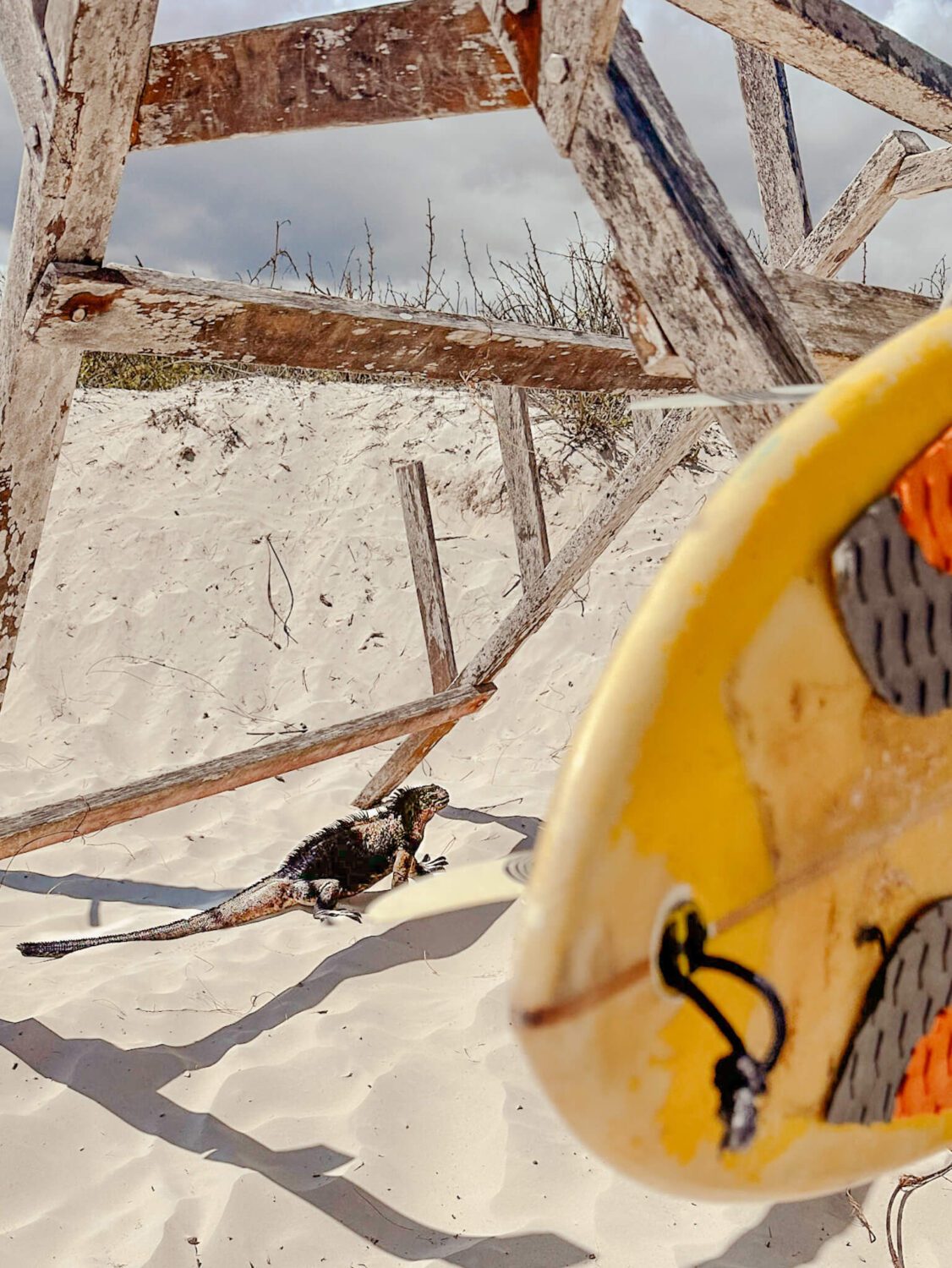
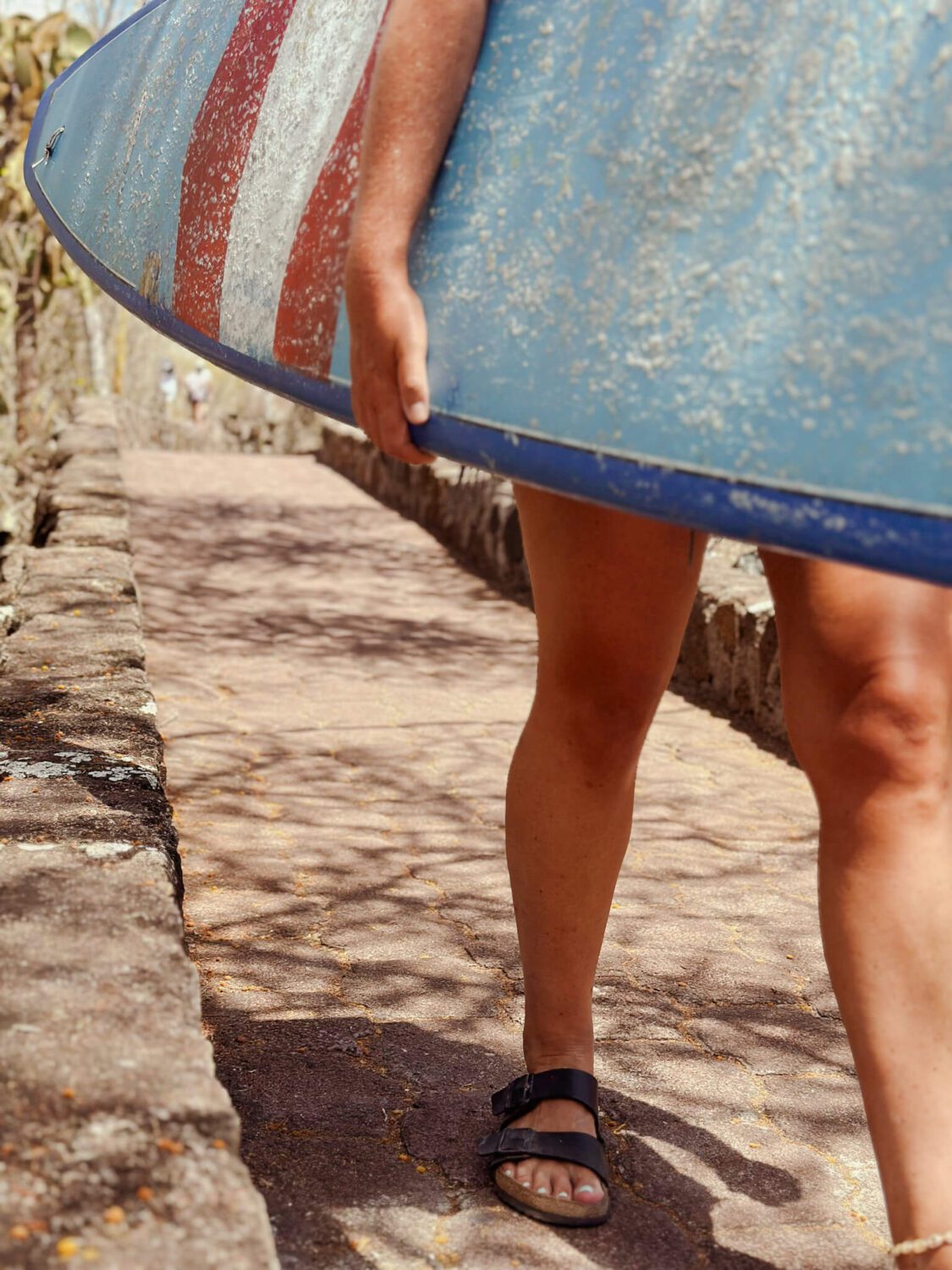
If you make the trek out to Tortuga Bay, and catch your breath after lugging your board the distance, you will be gobsmacked by the crystal clear turquoise waters. But be prepared to share the waves with marine iguanas, sea turtles, playful sea lions, and maybe even a couple reef sharks. While sitting on my board with the waves to myself I was taking in the sights when I saw the unmistakable silhouette of a shark below me. Although only a baby at 40 centimeters or so, I was fully set on making it home with all my limbs attached. Thank goodness for the size of a longboard, I tucked my arms and legs onto the board and quietly drifted above the unaware animal until it peacefully swam out of sight.
